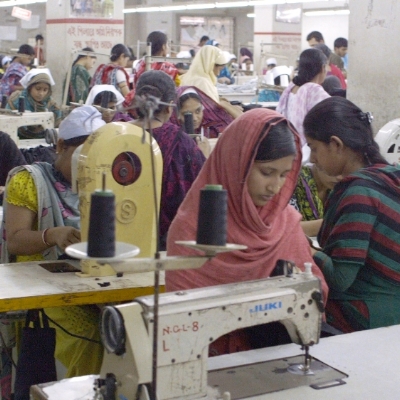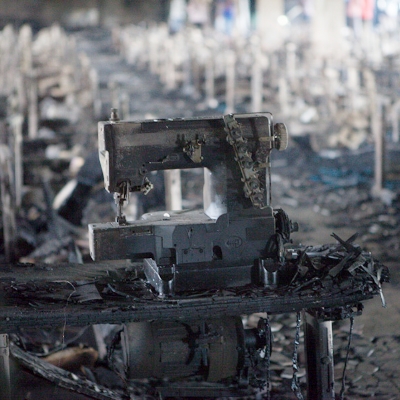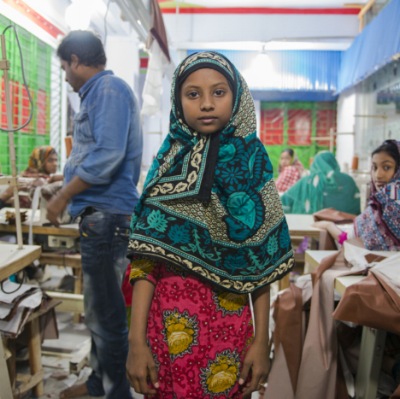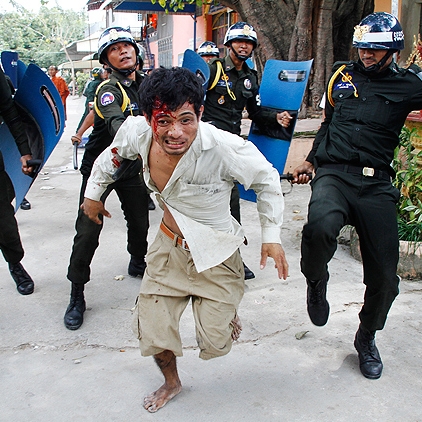Working Conditions Fashion Industry the Gurdian
Working conditions
We take known this for decades: virtually of our wearing apparel are made in countries in which workers' rights are limited or non-existent. In fact, production sites are regularly moving location, on the sentry for ever cheaper labour costs.
We often hear company owners saying that "for these workers, it is amend than nothing", "at least nosotros give them a job", and to a certain extent, they are right. Only it is also right to say that they are exploiting the misery and taking advantage of poor populations who have no selection but to piece of work for any salary, in any working conditions. Even the European Parliament is using the term "slave labour" to depict the current working weather of garment workers in Asia.
Nosotros know that if working atmospheric condition amend in i country, companies will just move to another. We believe that we cannot expect much from the corporate world or from governments if consumers practice not button for a change.
Wages in the fashion industry
Many fashion brands assure their customers that the workers who made their wearable are paid "at least the minimum legal wage". But what exactly does that mean?
First of all, it means that many other brands do not fifty-fifty pay the minimum legal salary!
Furthermore, in almost of the manufacturing countries (China, People's republic of bangladesh, India...), the minimum wage represents between half to a fifth of the living wage. A living wage represents the blank minimum that a family requires to fulfil its basic needs (food, hire, healthcare, instruction, etc). Then, in summary, these brands are bragging nigh paying their employees 5 times less than what a person really needs to live with dignity…

Working hours
Garment workers are frequently forced to work 14 to 16 hours a day, 7 days a week. During peak season, they may work until two or 3 am to run across the manner brand's deadline. Their basic wages are so low that they cannot reject overtime - aside from the fact that many would be fired if they refused to work overtime. In some cases, overtime is not even paid at all.

The Truthful Cost Movie

Health and safety conditions
The collapse of the Rana Plaza in 2013, killing 1134 garment workers in Dhaka, Bangladesh, has revealed the unacceptable working conditions of the whole fashion industry to the globe.
Employees normally work with no ventilation, breathing in toxic substances, inhaling fiber grit or blasted sand in unsafe buildings. Accidents, fires, injuries, and illness are very frequent occurrences on fabric production sites.
On pinnacle of that, clothing workers regularly confront verbal and physical corruption. In some cases, when they fail to meet their (unreachable) daily target, they are insulted, denied breaks, or non allowed to drink water.

Tazreen Fashions burn down Bangladesh

Child labour in the fashion industry
160 million children in the earth are forced to work.
Considering the fashion industry requires depression-skilled labour, child labour is particularly common in this industry.
In South India, for instance, 100,000 girls piece of work under the Sumangali scheme, a practice which involves sending young girls from poor families to work in a textile factory for 3 or v years in exchange for a basic wage and a lump sum payment at the end to pay for their dowry. Girls are overworked and alive in appalling conditions that tin can be classified as mod slavery.


Forced Labour in the mode manufacture


Unions restrictions in the fashion industry
In almost of these factories, garment workers are not allowed to course unions to defend their rights collectively.
Governments' laws and specific regulations in export zones where factories are established often restrict the creation of unions, like in Bangladesh, where but 10% of the 4,500 garment factories accept a registered spousal relationship.
Some factories owners also threaten or physically attack unions members or fire them with total impunity, which does non encourage employees to grade unions.
"If their workers had more of a vocalisation, they might have been able to resist managers who ordered them to work in the doomed building a day later on big cracks appeared in it."

0 Response to "Working Conditions Fashion Industry the Gurdian"
Post a Comment